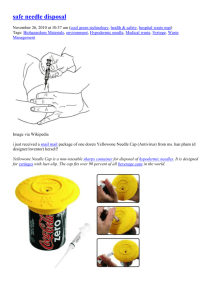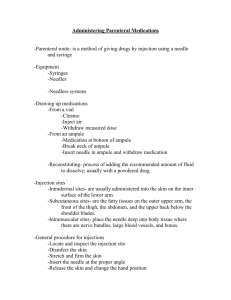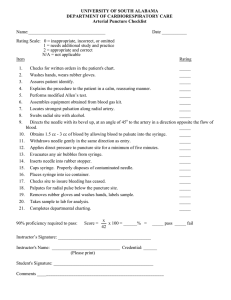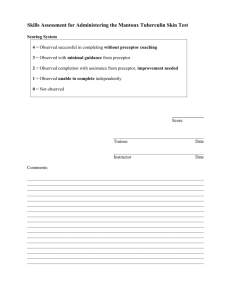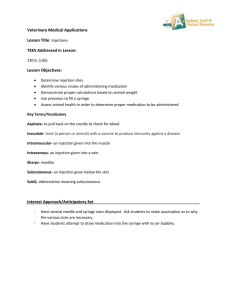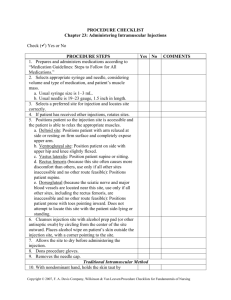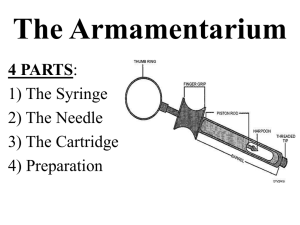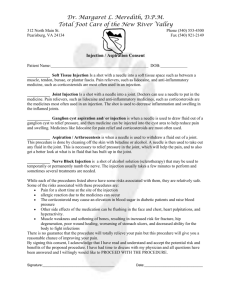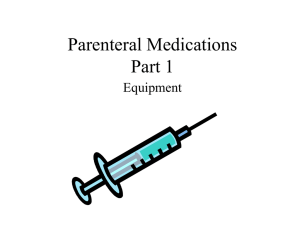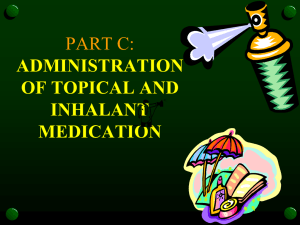Infection Control, Medical Emergencies, Vital Signs & Oxygen
advertisement
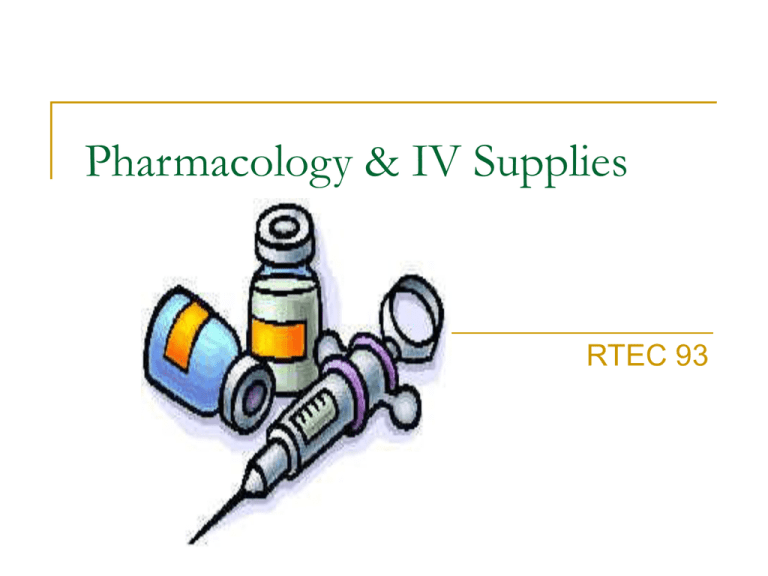
Pharmacology & IV Supplies RTEC 93 Pharmacology for the Radiologic Technologist Drug Classifications Name – generic or brand Action Method of legal purchase (prescription or non-prescription) Classification by Name Chemical name – actual chemical structure Generic name – when it becomes commercially available (never capitalized) – nonproprietary name Brand name – give by a drug manufacture – trademark, trade name, proprietary name Example Chemical name – 7 chloro-1,3-dihydro1-methyl-5-phenyl-H-1,4benzodiazepin-2-one Generic name – diazepam Brand name - Valium Drug Reactions Anaphylaxis – VS Anaphylactoid Principles of Drug Administration “The golden rules of drug administration” The five rights of drug administration Right drug Right patient Right route Right amount Right time Drug Routes Oral – by mouth Sublingual – under the tongue Topical – directly onto the skin – transdermal Parenteral – by injection or other than oral - intramuscular, subcutaneous, intravenous, intrathecal Charting Drug Information Any time a drug is administered to an inpatient it must be charted Information includes: – Drug name – Dose of the drug – Route of administration (if parenterally, then the side of injection) – Date & Time Legal Considerations Errors with drug administration is the most common legal problems for radiologic technologists Techs must follow charting protocols and document all errors in drug administration Pg. 319 Do Not Use – abbreviations Parenteral Injection Supplies Drugs are injected into the body with a plastic syringe. All of the supplies for drug injection are used only once. – The tourniquet may be used again as long as it was not soiled. Supplies for Venipuncture • • • • • • • • Disposable gloves Alcohol Swabs Tourniquet Needle – Butterfly or Angiocath Tape 2X2 or 4X4 Contrast & Syringes Saline 3 parts of the syringe Plunger, Barrel & Tip Sizes General-purpose syringes – 2, 2.5, 3, 5, 10, 20 & 50 ml Special design syringes – TB & insulin syringes – Luer-Lock syringes (best for closed systems) 3 parts of the needle Hub, Cannula or Shaft & Bevel Needle Sizes Length The measurement in inches of the shaft portion 0.25 to 5 inches Shorter = subcutaneous, Longer = IM, 1 – 1.5-inch = IV Needle Sizes Gauge The thickness of diameter of the needle The smaller the diameter of the shaft the finer the needle, the larger the gauge number. Inverse relationship with size and # (Ex: 25-gauge very small diameter, 18-gauge used to draw contrast not start IV’s) Examples: Package labeled “20g/1.5” “25g/1” “22g/1/5” Bevel Length Long bevels = SC & IM Short bevels = IV Parenteral Drugs 2 different containers: Ampule & Vials Ampule = sealed glass container holding one single dose Vial Small glass bottle with a sealed rubber cap Different sizes and may contain multiple doses of a drug When you are done with your supplies where do your dispose of them? Questions? "The pessimist sees difficulty in every opportunity. The optimist sees the opportunity in every difficulty." Winston Churchill Demo “filling a syringe” Lab practice: Vitals & drawing meds

